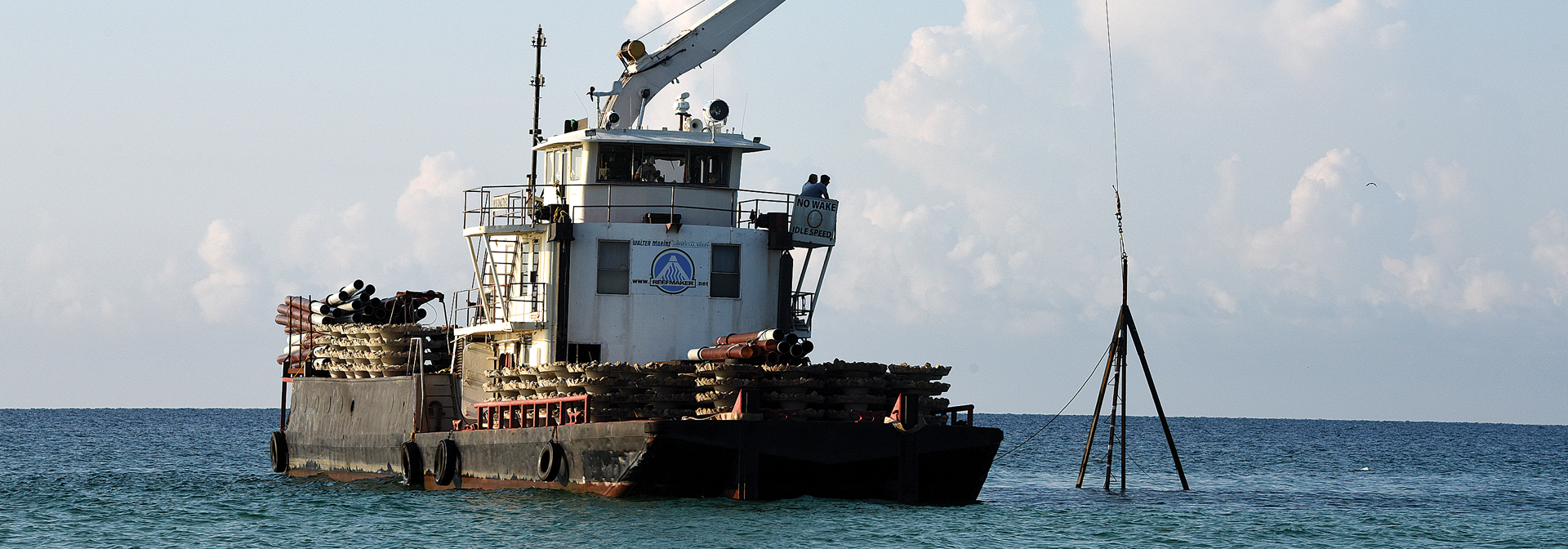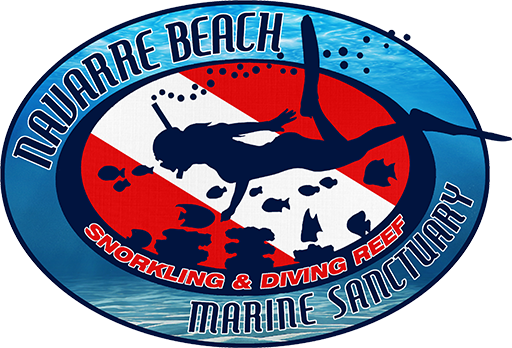
Shifting sand forces revamp of reef project
Navarre Press – Published 9/28/17
Rough seas and shallow water have caused a change of plan in the expansion of the Navarre Beach near-shore snorkel reef.
Workers from reef-building company Walter Marine started deploying the reef modules early Friday morning, but they hit a snag, said Navarre Beach Marine Park chairman Mike Sandler.
“The great news is the reef deployment has started. The bad news is we will not be able to get our first two northern rows of reef deployed,” he said. “Walter Marine spent a lot of time trying, but the shifting sand caused the sea floor to be too shallow to allow for the minimum 6 feet clearance.”
The initial expansion plan called for 60 modules to be deployed, tripling the size of the existing reef.
The modules are disks of concrete on fiberglass supports. These supports are driven into the sand to act as a “skeleton” on which the reef can grow. The concrete is embedded with limestone. David Walter, owner of Walter Marine, explained that limestone has the proper pH for all marine life and is soft enough to allow animals to dig in.
The module provides a surface area for marine plants and animals, like coral, to grow. The existing reef is composed of 30 of these modules. Species spotted on the reef include trigger fish, puffer fish, squirrel fish, dolphins, guppies, damsels, sea turtles, octopus, crabs and more.
The modules are being deployed in rows on the east and west sides of the existing reef.
The new rows closest to the shore will have three disks, and the other half will have four.
But 12 of the reef modules, six on the east and six on the west, will not be deployed because of the problems encountered.
“Since the permit has very strict placement parameters, we cannot put the structures in other locations,” Sandler said. “With much discussing with Taylor Engineering (the project designer) and (Florida Fish and Wildlife Conservation Commission), we will not deploy those first six on each side.”
The cost of the deployment was initially estimated at $210,900.
Funds from the modules that will not be used will be rolled into the construction of a fishing and dive reef one mile south of the end of the Navarre Beach Fishing Pier. That reef is currently being designed.
The reef projects were made possible by the efforts of the Navarre Beach Area Chamber of Commerce Foundation in partnership with Santa Rosa County after the foundation began exploring what it would take to bring an artificial reef to Navarre through grants.
The county secured a $1.4 million grant from the National Oceanic and Atmospheric Administration for the projects.
Deployment of the near-shore reef was initially estimated to take two to three days, but rough seas prevented any deployment over the weekend. Sixteen modules have been placed, and the remaining 32 will be forthcoming.
